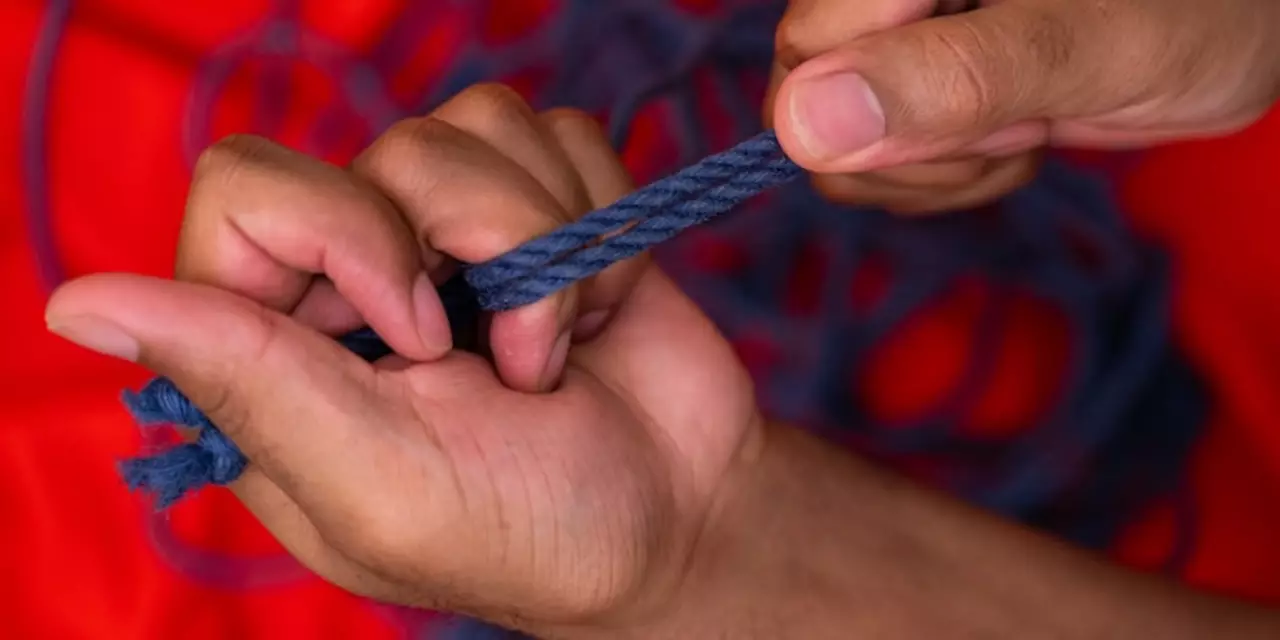Exploring Different Tying Techniques: A Guide to Safe and Fun Bondage
Whether you’re a beginner or a more experienced bondage enthusiast, it’s important to know the basics of tying yourself up safely and securely. In this article, we’ll explore some of the best techniques for self-bondage, and discuss the tools you’ll need to get started.Different tying techniques
When it comes to bondage, there are a few main techniques to consider. Depending on the type of bondage you’re looking to achieve, you can choose from rope, cuffs, and other restraints. Here’s a quick overview of the different tying techniques:
Rope: Rope is one of the most popular and versatile forms of bondage. It’s easy to use and can be used to tie up any part of the body. You’ll need to learn a few basic knots to get started, and you may want to invest in some specialty rope for better comfort and security.
Cuffs: Cuffs are metal restraints that can be used to secure wrists and ankles. They’re often used in combination with rope to create a more secure form of bondage. Make sure you choose cuffs that are adjustable and comfortable to ensure a safe and pleasurable experience.
Handcuffs: Handcuffs are metal restraints that are designed to be used on the wrists. They’re typically used in combination with rope or cuffs for a more secure form of bondage. Be sure to choose handcuffs that are adjustable and comfortable for a safe and enjoyable experience.
Tools for safe and fun bondage
Once you’ve chosen the tying technique that’s right for you, it’s time to gather the tools you’ll need for a safe and fun bondage experience. Here’s a list of some essential items to have on hand:
Rope: If you’re using rope for bondage, make sure to purchase quality rope that’s strong and comfortable.
Cuffs and Handcuffs: Make sure to select cuffs and handcuffs that are adjustable and comfortable.
Blindfold: A blindfold can add an extra level of excitement and mystery to your bondage experience.
Lubricant: Lubricants can help make rope and cuffs more comfortable and easier to use.
Safety Scissors: Always have a pair of safety scissors on hand in case you need to quickly release yourself from bondage.
Conclusion
Tying yourself up can be a thrilling and exciting experience, but it’s important to always do it safely and securely. Make sure you choose the right tying techniques and tools for your needs, and always have a pair of safety scissors nearby in case of an emergency. With a little bit of preparation, you can enjoy a safe and fun bondage experience.
A Beginner's Guide to Basic Bondage: How to Tie Yourself Up for Maximum Pleasure
One of the most exciting aspects of BDSM play is the power exchange that can occur when you tie yourself up. Bondage is a great way to explore your kinky desires and can be done in a variety of ways. Whether you’re a beginner who’s just getting started in the world of BDSM or an experienced kinkster looking to explore new techniques, this guide will provide you with the basics of tying yourself up for maximum pleasure.The first step in learning how to tie yourself up is to decide which type of bondage you want to use. There are a few different types of bondage, including rope bondage, metal bondage, and fabric/scarf bondage. Each type of bondage has its own unique advantages and disadvantages, so it’s important to consider what type of bondage will be most comfortable and pleasurable for you.
Once you’ve decided which type of bondage you’re going to use, the next step is to learn the different techniques used in tying yourself up. For rope bondage, you’ll need to learn how to tie different types of knots, as well as how to create intricate patterns and weaves. For metal bondage, you’ll need to learn how to use handcuffs, shackles, and other metal bondage tools. And for fabric/scarf bondage, you’ll need to learn how to tie different types of knots and wraps.
It’s also important to remember safety when tying yourself up. If you’re using rope bondage, make sure you know how to tie knots that will stay secure, but can also be easily undone in case of an emergency. With metal bondage, be sure to use safety locks and other safety measures. And with fabric/scarf bondage, make sure you tie in a way that won’t constrict your circulation.
Finally, make sure you take the time to enjoy the experience. Bondage can be incredibly pleasurable and exciting, so take the time to savor the sensations. If it’s your first time tying yourself up, you may want to start off with something basic and work your way up to more complicated ties over time.
With a bit of practice and patience, tying yourself up can be an incredibly enjoyable experience. So go ahead and explore the world of bondage–it’s time to find out just how much pleasure you can get from tying yourself up!
The Best Knots for Bondage: How to Create Secure, Safe, and Enjoyable Ties for You and Your Partner
Tying yourself or your partner up can be an incredibly exciting and pleasurable experience. However, it is important to be aware of the safety and security of the knots that you use. This article will discuss the best knots for bondage and how to create them to ensure a safe and enjoyable experience.There are many types of knots that can be used for bondage. Some popular knots include the half-hitch, the double-hitch, the figure-eight knot, and the square knot. Each of these knots has its own unique advantages and drawbacks that should be considered when creating a secure and safe tie.
The half-hitch is a simple knot that can be used to tie a rope or cord around a partner’s wrists or ankles. To create this knot, you will need two pieces of rope or cord, one for each hand or foot. Begin by looping each piece of rope or cord around the partner’s wrist or ankle, and then tie a simple knot by crossing the two pieces of rope or cord over each other. This knot is easily adjustable and can be undone quickly.
The double-hitch is a slightly more complicated knot, but it is also more secure than the half-hitch. To create this knot, you will need two pieces of rope or cord, one for each hand or foot. Begin by looping each piece of rope or cord around the partner’s wrist or ankle, and then tie a knot by crossing the two pieces of rope or cord over each other. This time, however, you will also need to tie another knot on top of the first one. This knot is more secure and will take longer to undo.
The figure-eight knot is a bit more complicated than the half-hitch and double-hitch knots. To create this knot, you will need three pieces of rope or cord, one for each hand or foot. Begin by looping each piece of rope or cord around the partner’s wrist or ankle, and then tie a knot by crossing the three pieces of rope or cord over each other. Then, tie another knot on top of the first one. This knot is very secure and will take a long time to undo.
The square knot is a very secure knot that is often used in medical or emergency situations. To create this knot, you will need two pieces of rope or cord, one for each hand or foot. Begin by looping each piece of rope or cord around the partner’s wrist or ankle, and then tie a knot by crossing the two pieces of rope or cord over each other. Then, tie another knot on top of the first one, but this time, instead of crossing the two pieces of rope or cord over each other, you will need to tie them in a square pattern. This knot is very secure and will take a long time to undo.
No matter which knot you choose to use for bondage, it is important to make sure that you and your partner are comfortable with the level of security. If you are unsure about the safety of the knot, it is best to err on the side of caution and tie a more secure knot. With the right knot and the right amount of communication, you and your partner can have a safe and enjoyable experience.




